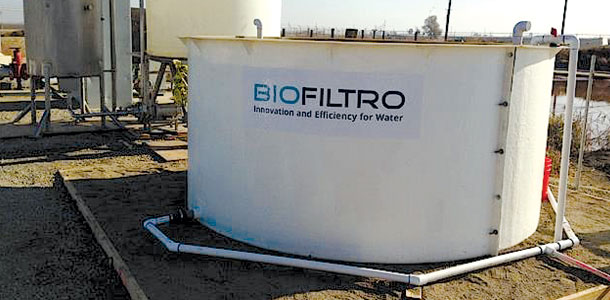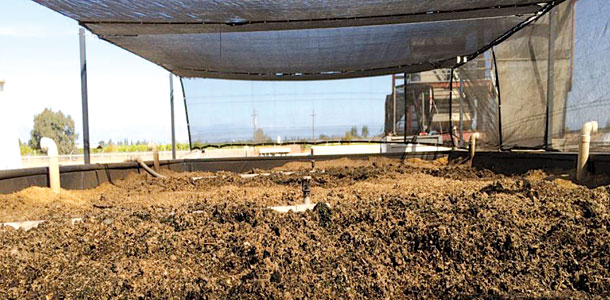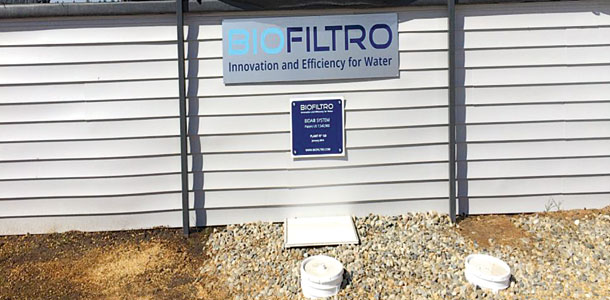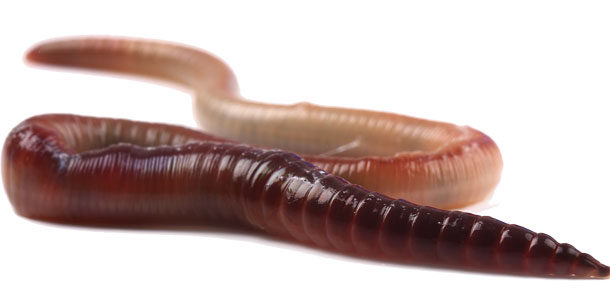Fresno State University dairy tests pilot system You’ve probably heard the horror stories about drinking water and streams being contaminated by dairy wastewater. Fortunately, while regulations have tightened, the technology to treat and re-use wastewater from dairy farms has expanded. The latest innovation is a sustainable, energy-efficient approach that uses worms and their castings (manure) to generate clean, re-usable water.
A Chilean company by the name of BioFiltro invented the technology in 1994 to treat domestic sewer water. The patented BIDA (BioFilter Dynamic Aerobic) system, as it is called, has been installed in more than 100 facilities in five different countries, including several New Zealand dairy operations.
Currently, BioFiltro has four pilot systems in the Central Valley of California, including the Fresno State University dairy research facility.
“It’s a wastewater treatment system used to reduce the organic loading within the waste streams from food processing facilities, dairies and sewage systems,” says Sanjar Taromi, chief marketing officer at BioFiltro.
This sustainable technology works in a unique and resourceful manner. The system consists of multiple layers: Worms and their castings inhabit the top portion of wood shavings, and below that is a foot of rock, and at the base, a pocket of air that is connected to a pipe that ensures the system stays passively aerated.
Taromi explains how the dynamic aerobic biofilter is completely gravity-driven, resulting in decreased levels of nitrogen/nitrates and other toxins commonly found in the wastewater.

After the system has been operating for two months, the castings build up and create a filter of microflora and micro-organisms for the water to be processed through. Then the intrinsic method only takes three to four hours from start to finish.
Here’s the step-by-step process:
1. Using a mechanical separator, a majority of the solids are removed from the wastewater.
2. The wastewater is then stored in an accumulation tank, where it is intermittently pumped out and sprinkled on top of the wastewater treatment system.
3. Once the wastewater hits the wood shavings, larger manure particles and solids and other organic material are absorbed into the shavings.
4. The earthworms feed on the wood shavings, generating castings filled with contaminates from the water.
5. The filtered water continues through the rest of the wood shavings and rock, which are now inhabited by colonies of bacteria that assist in the process of cleaning the water.
Fresno State operates a water energy technology (WET) incubator program that BioFiltro is a participant in.
“[This particular wastewater system] was installed in May on our dairy which we are evaluating,” says Dr. David Zoldoske, director for the Center of Irrigation Technology at Fresno State. “We are also evaluating a similar installation at a local tomato-processing plant.”

Zoldoske explains that the pilot projects will be evaluated on the effectiveness and cost-efficiency of treating the contaminated water compared to alternative technologies.
Through these studies, the university is evaluating the water quality that goes into the system and what comes out, the time it takes to complete the process, the square feet required for each unit of water treated and the energy requirements to treat the water.
“So far, we are seeing significant reduction in some contaminates in the flush water,” Zoldoske says.
Taromi adds that these early results are very promising.
While it is still too soon to conclusively talk about the results of the treatment system at the dairy, Taromi is confident the findings will support the project’s early data that has already been collected. Final results are anticipated late in the fall.
Aeration is the most comparable process to what the BIDA system does.
The gravity-driven, low-horsepower operation arguably produces cleaner water than any of the competing systems while simultaneously producing byproducts that are beneficial to dairy producers and other agriculturalists.
“Our system produces worm castings, which are a soil amendment; it also produces worms, which are a protein source for animals,” Taromi says. “There happens to be a growing market in vermicomposting.”
Zoldoske says whether or not the process in progress at Fresno State would be used to completely treat wastewater or used as a pre-treatment source is unclear; so far, it does appear to be a cost-effective method for treating dairy water.
“One of the beauties of this system is that is it natural and requires limited human labor,” Zoldoske says. “We just have to make sure the worms remain healthy and the flows are maintained, keeping everything in balance. It’s the simplicity of it that is also very attractive.”

BioFiltro has created a scalable operation meant to fit any farm. Their first installation on a California commercial dairy will be a 700-cow facility near Hilmar. To put that in perspective, Fresno State currently manages roughly 300 cows.
The system is great for a 200-cow dairy up to a 10,000-cow farm, Taromi explains.
“We make it so that it makes sense,” he says. “Our main goal is to provide the system to the customer, and we can make that happen. We want to offer the technology wherever it is needed.”
Currently, the Chilean company is focused on dairy producers in the Central Valley. It has been suggested that by 2019, enforcement of strict water regulations may begin, potentially creating hurdles for California dairymen to overcome.
This natural treatment system is a creative solution for dairymen who are being confronted by nitrate contamination of groundwater and the limitations imposed on them for expansion. By installing the biofilter, producers can reduce the amount of land used due to the sequestering of nitrate and nitrogen, while still being able to increase their herd size.
“While there is still data to be collected, we are working towards a solution to the nitrate problem and to help stop the contamination of groundwater from dairies,” Taromi says. “With this, we will also be able to re-use that water in more efficient irrigation methods.” PD
Jennifer Janak is a 2014 Progressive Dairyman editorial intern.
PHOTOS
The pilot system at Fresno State is being monitored to determine efficiency and effectiveness for dairy waste water treatment. Photos courtesty of BioFiltro.



.jpg?t=1687979285&width=640)


